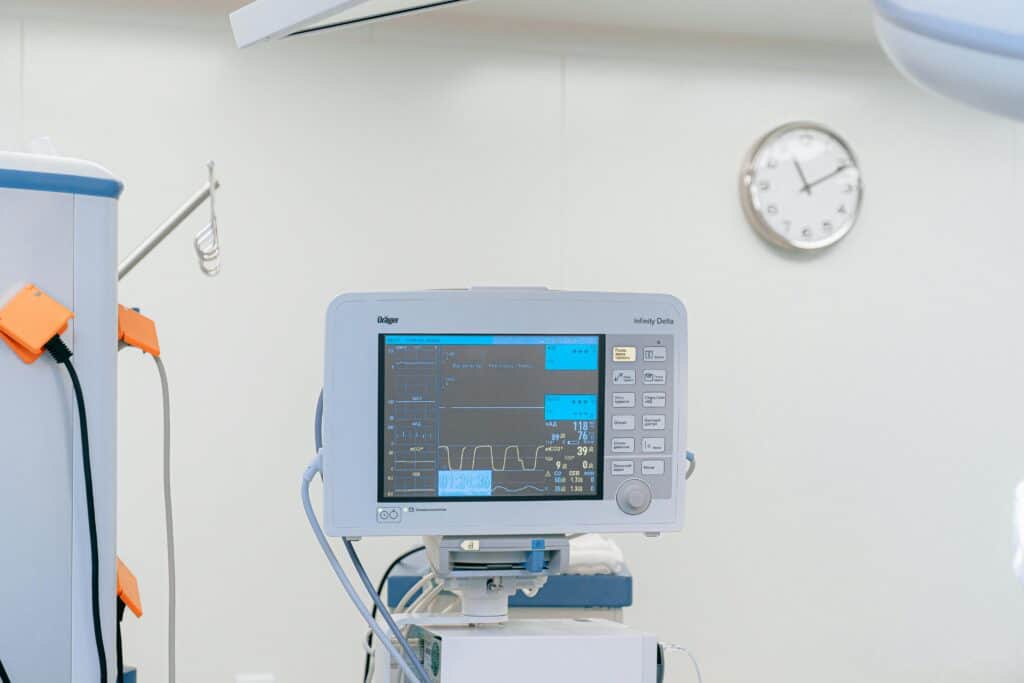Business owners put all of their financial and emotional assets into starting and growing their businesses. I congratulate the talented businesspeople with the desire to start a business and drive to provide income for their families and the families of their employees.
Every successful business owner has stories of the challenges that could have resulted in the closing of their business. This blog provides a straightforward, no-nonsense strategy that small business owners and managers can implement to reduce technology risk and stay ahead of evolving cyberthreats.
Why Small Businesses Are Frequent Targets
Many assume hackers go after the biggest players. The reality is different. Small businesses often provide the path of least resistance.
Lack of Sophisticated Defenses
Antivirus software isn’t enough. Without layered protections, like firewalls, secure backups, and active monitoring, attackers can slip through unnoticed.
Limited In-House IT Support
Small businesses often lack IT teams that consider the risk / reward to the business of changes. Without ongoing oversight, vulnerabilities can persist for months, providing ample opportunity for exploitation.
Valuable Yet Unprotected Data
Even the smallest businesses collect customer information, payment details, and employee records. This data is as valuable to attackers as that of larger companies.
Increased Use of Cloud and Remote Tools
The shift to cloud platforms, remote access, and mobile devices creates new openings. Without proper configuration and control, these tools can expand the attack surface.
Lack of Cybersecurity Awareness
In many small business environments, cybersecurity is not viewed as a business function; it’s seen as a technical issue delegated to one person or an outsourced vendor. This perception gap can leave leadership unaware of existing vulnerabilities or overconfident in current safeguards. Without a clear understanding of what’s at stake or how threats evolve, businesses are less likely to prioritize investments in prevention.
Understanding Your Data’s Value
Before implementing security measures, small businesses should identify their most valuable digital assets. This goes beyond simply listing data. It involves understanding which information is most sensitive, critical to operations, or holds competitive value. This might include customer lists, payment information, proprietary designs, or strategic business plans.
Knowing what data needs the highest level of protection allows for a more targeted and efficient allocation of security resources. It shifts the focus from a generic approach to one that prioritizes the truly indispensable elements of the business.
Classifying and Tagging Sensitive Information
Once key assets are identified, businesses should classify their data based on sensitivity and risk level. For example, payment details might require end-to-end encryption and access restrictions, while internal memos might need only basic protection. Tagging files and systems according to their classification streamlines security measures and helps ensure compliance with regulatory standards.
Understanding the Cost of a Breach
The costs of data recovery, customer notifications, legal fees, and potential fines can be substantial. Insurance might help, but many policies don’t cover the full scope.
There are also hidden costs to consider: prolonged downtime can disrupt cash flow, customer churn may follow a trust breach, and in some cases, businesses have had to rebrand or rebuild damaged reputations from scratch. These secondary impacts often outweigh the immediate losses.
Operational Disruption
Even a short interruption in access to critical data or systems can halt operations. In many cases, recovery takes weeks or longer.
Financial Fallout
The costs of data recovery, customer notifications, legal fees, and potential fines can be substantial. Insurance might help, but many policies don’t cover the full scope.
Reputational Harm
Customers expect their data to be safe. A security lapse can erode trust, drive customers to competitors, and make future sales harder.
Compliance Penalties
Depending on the industry, a data breach could also result in fines or legal consequences under laws like HIPAA, PCI-DSS, or state privacy statutes.
Supply Chain Vulnerabilities
A breach at a small business can ripple through its supply chain, affecting partners, vendors, and clients. If a compromised system is used to transmit malware or access third-party data, the business could face legal liabilities and damage to crucial relationships. Strengthening internal security helps prevent the business from becoming a weak link in someone else’s infrastructure.
Building a Solid Cybersecurity Foundation
Cybersecurity doesn’t start with technology, it starts with mindset and discipline. Small businesses can protect themselves by adopting structured, proactive habits.
Make Security Part of the Business Culture
Security shouldn’t be confined to the IT department, it should be everyone’s responsibility. Encourage open conversations about best practices and integrate security protocols into day-to-day operations. From onboarding to weekly check-ins, make security a shared priority.
Regularly Update Software and Systems
Outdated software is one of the most common entry points for attackers. Enable automatic updates where possible and designate someone to routinely check for necessary patches across systems, browsers, and applications.
Implement Strong Password Hygiene
Weak or reused passwords remain a top vulnerability. Enforce policies that require complex, unique passwords. Use password managers to eliminate the need to remember multiple logins and reduce the chance of unsafe practices like writing them down.
Use Multi-Factor Authentication (MFA)
MFA is one of the most effective defenses against unauthorized access. By requiring a secondary verification step, such as a code sent to a mobile device, it significantly strengthens login security. Enable MFA on all platforms that support it, especially those involving email, cloud storage, and financial data.
Train Employees to Spot Threats
The majority of breaches originate from human error. Phishing emails, malicious attachments, and social engineering tactics often trick users into granting access. Offer regular training to help employees recognize red flags, verify requests, and report suspicious activity promptly.
Training should include real-world examples of threats, such as emails that mimic familiar vendors or urgent requests that pressure employees into clicking links or sharing credentials.
Teach staff to hover over links to check the actual URL, verify sender addresses, and never download unexpected attachments. The more realistic the training, the more prepared your team will be.
Keep Security Policies Simple and Accessible
Complex policies are often ignored or misunderstood. Write security guidelines in plain language, with examples that relate to employees’ daily workflows. Use visuals or short videos to reinforce learning and make sure policies are easy to find and refer to, especially during onboarding or role changes.
Practical Defensive Tactics
Effective cybersecurity includes both digital safeguards and physical practices. Implementing small changes can have a big impact.
Secure Wi-Fi Networks
Default router settings are not secure. Change router passwords, use WPA3 encryption if available, and disable remote management. Create separate guest networks for visitors to avoid exposing internal systems.
Backup Data Using the 3-2-1 Rule
A reliable backup strategy ensures resilience against ransomware or system failure. Follow the 3-2-1 rule: three copies of your data, on two different media types, with one stored offsite or in the cloud. Automate backups and test them regularly to ensure they can be restored quickly.
Protect Mobile Devices and Remote Access
Laptops, smartphones, and tablets used for business should be encrypted, password-protected, and set to lock automatically. Enable remote wipe capabilities to protect data in case of loss or theft. Avoid using public Wi-Fi without a secure VPN connection.
Control Access Based on Roles
Not everyone needs access to everything. Grant users access only to the files and systems necessary for their work. This principle of least privilege reduces the chance of accidental exposure or misuse. When employees change roles or leave, immediately update or revoke access.
Use Endpoint Protection Across All Devices
Modern endpoint protection goes beyond antivirus. It includes behavior-based detection, threat intelligence, and application controls. Choose solutions that support centralized monitoring so administrators can quickly detect and respond to threats.
This is especially critical for businesses with remote or hybrid teams. Employees using home networks or personal laptops may unknowingly introduce vulnerabilities. Robust endpoint protection ensures that even off-site devices meet your security standards and can be managed consistently across locations.
Monitor Systems Consistently
Monitoring is not optional. Without it, suspicious activity often goes unnoticed until it’s too late. Implement tools that provide visibility into login attempts, file transfers, and system changes. Set alerts for unusual behavior and keep logs for forensic analysis.
Pay particular attention to red flags like multiple failed login attempts, off-hours access to sensitive files, or large-scale downloads from unusual locations. These indicators can be early signs of an attack. Assign someone to review alerts regularly, even if it’s just part-time, so you’re not blindsided by unnoticed anomalies.
Avoiding Common Pitfalls
Even with good intentions, certain practices can weaken your cybersecurity position.
Relying Solely on Insurance
Cyber insurance is useful, but it doesn’t replace prevention. Many policies require proof of best practices, like MFA or regular training, to remain valid. Always view insurance as a backup, not the first line of defense.
Using Personal Devices for Business Without Controls
When employees use personal devices, security gets complicated. Define clear policies for bring-your-own-device (BYOD) environments. Require security apps, enforce password protection, and ensure business data can be separated and deleted if needed.
Delaying Updates and Maintenance
It’s easy to postpone patches or ignore alerts. But each delay adds risk. Designate someone to stay on top of updates, review system logs, and act on alerts in a timely manner.
Overlooking Physical Security
Stolen laptops, unlocked storage rooms, and unattended desktops can all lead to data loss. Train staff to lock screens, secure equipment, and report lost devices immediately.
Addressing Compliance Requirements
Many small businesses fall under state or federal data protection regulations. If you handle sensitive customer information, financial records, or health data, compliance isn’t optional.
Start by understanding which laws apply. Then, implement systems that support proper handling, access control, and secure storage.
Regular reviews and documented processes can help maintain compliance and protect your business in the event of an audit or breach.
Creating an Incident Response Plan
Even with precautions, no system is perfect. Preparing for the worst can reduce damage and speed up recovery.
Elements of a Good Response Plan:
A well-structured plan should cover these essential components to ensure a swift, organized, and effective response when an incident occurs.
- A designated response team with clear roles
- Steps for identifying and containing the threat
- Communication procedures for internal and external stakeholders
- Templates for customer notifications
- Recovery steps and post-incident reviews
Conduct tabletop exercises to rehearse responses and identify gaps. These practice runs don’t need to be overly technical; just walking through a potential scenario with your team can surface blind spots and clarify responsibilities. Also, assign a response coordinator to lead efforts during a real incident. Preparation turns a crisis into a managed event.
Planning for Future Growth
Cybersecurity is not a one-time effort. As your business grows, your digital footprint expands. Regularly reassess risks, review policies, and update defenses accordingly. Keep communication open between leadership and IT teams to stay ahead of emerging threats.
Invest in scalable solutions and keep staff engaged with continuous training. What works for five employees may not suffice when your team reaches 50. Make security part of your long-term business planning.
Integrate Cybersecurity Into Strategic Planning
Just as you plan for staffing, budgeting, and marketing, cybersecurity should be a recurring item on your leadership agenda. Include IT experts in strategic discussions, especially when adopting new technologies, entering partnerships, or expanding infrastructure. Treating security as a growth enabler, not just a protective measure, keeps your business both agile and resilient.
Let’s Protect Your Business, Together
Partnering with a trusted IT provider can make all the difference. From monitoring and maintenance to training and backup, professional support simplifies cybersecurity and helps you focus on growth.
Reach out to us at CMIT Solutions of Metrolina today to start a no-pressure conversation about your business goals and how to secure what matters most.





